Alhambra, Granada, Spain
The Alhambra is a magnificent palace and fortress complex located in Granada, Andalusia, Spain. It is one of the most famous examples of Islamic architecture and is a UNESCO World Heritage site. 686
Alhambra: C. Real de la Alhambra, s/n, 18009 Granada, Spain
Date Picture Taken: May 2023
The Alhambra was originally constructed as a small fortress in the 9th century and later converted into a royal palace by the Nasrid dynasty in the 13th century. It served as the residence of Muslim rulers of the Emirate of Granada.
I took a bus from the city center to the Justice Gate entrance of Alhambra.
Looking back at the entrance


Iglesia de Santa María de la Encarnación – Alhambra. Mosque turned Catholic church in the early 17th century, with an elaborate baroque-style altar.


Near the church is Palace of Charles V. It was the emperor’s Renaissance-style residence within the Alhambra featuring a grand courtyard & museums.



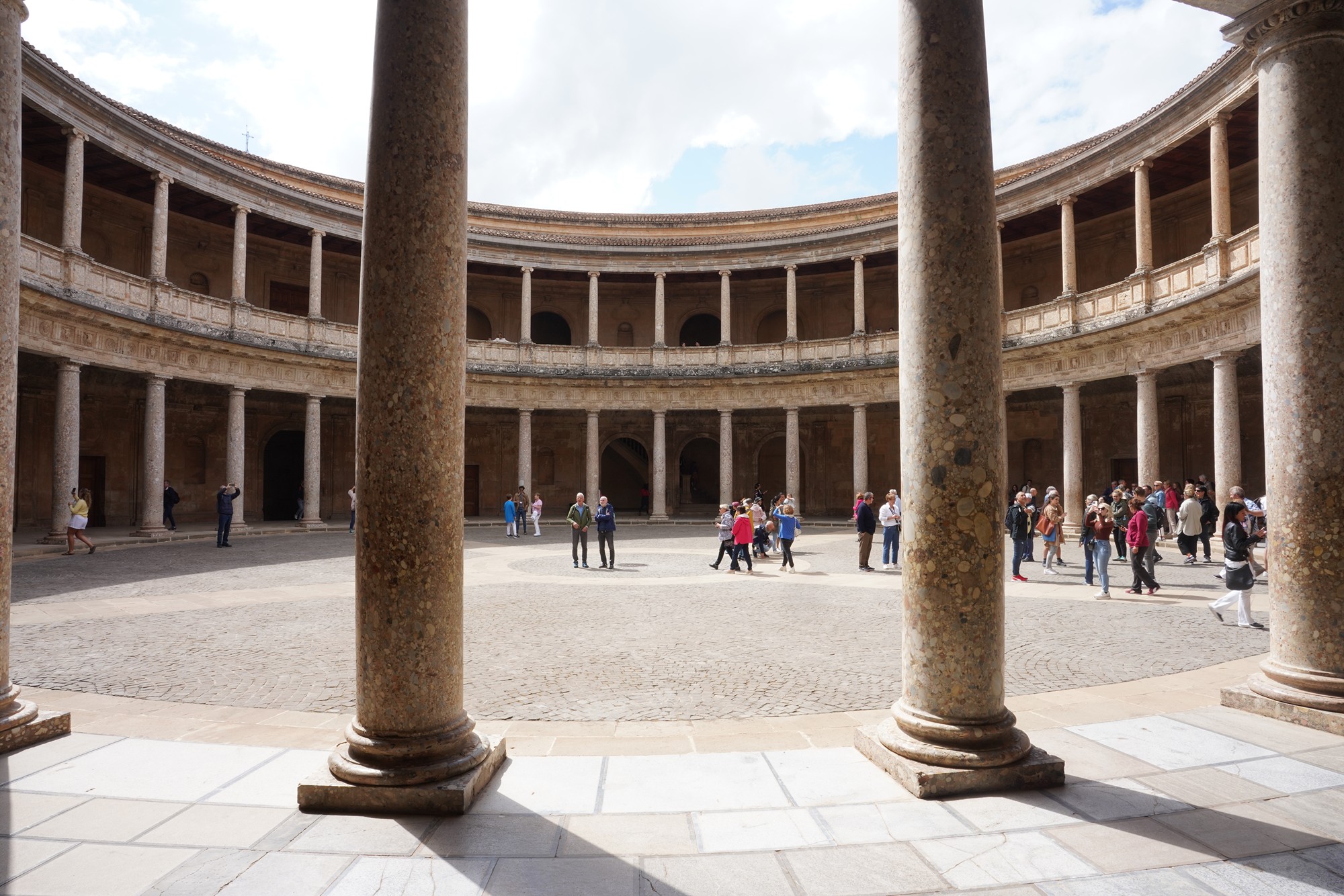



Alcazaba – 1200s fortification at the Alhambra with sweeping views from its main watchtower, Torre de la Vela.




The Alcazaba was built during the 9th century by the early Muslim rulers as a military fortress. It was later expanded and fortified by the Nasrid dynasty.


From Alcazaba, you can see the neighborhood of Albaicín


Far away, you can see the viewpoint of San Nicolas.


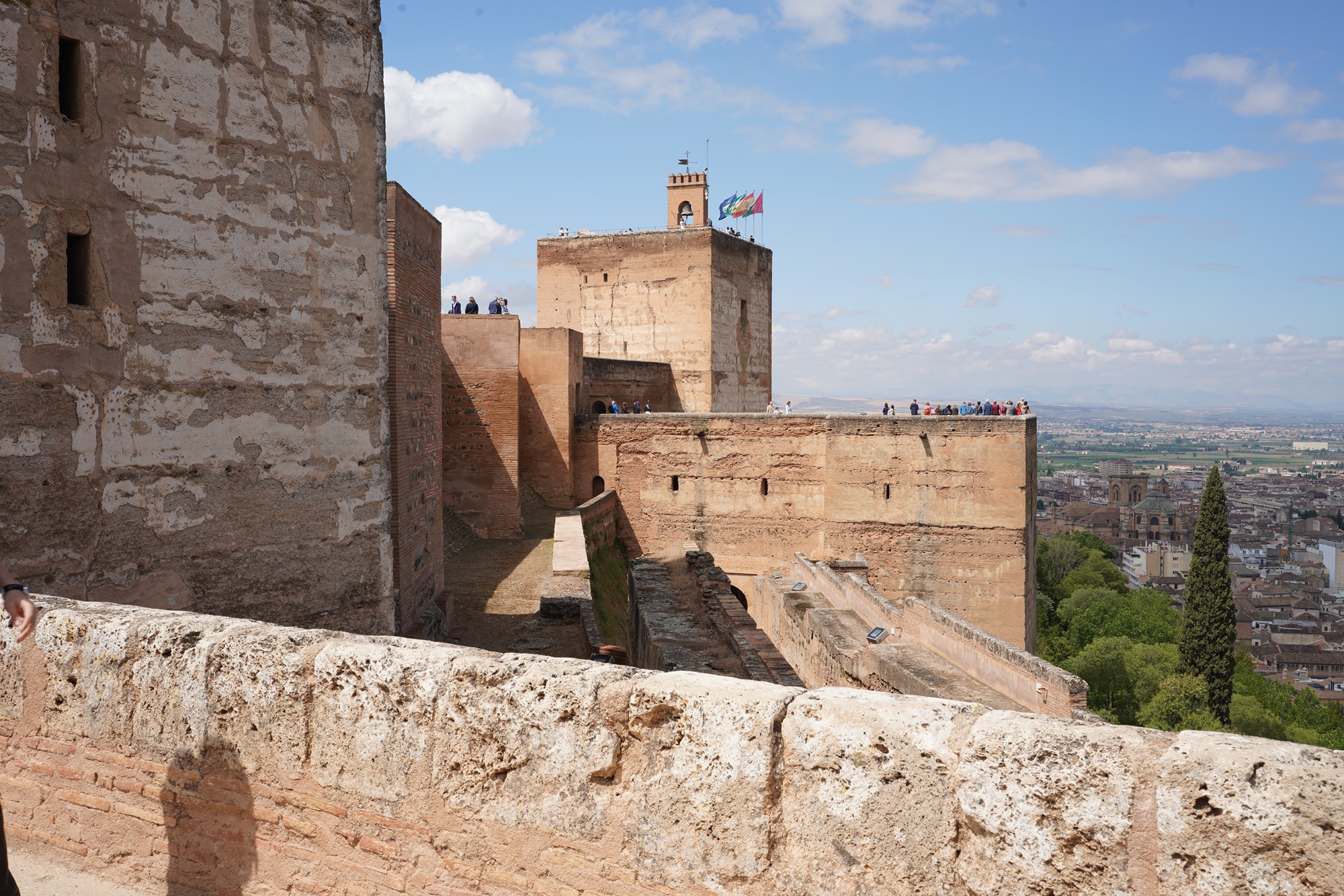


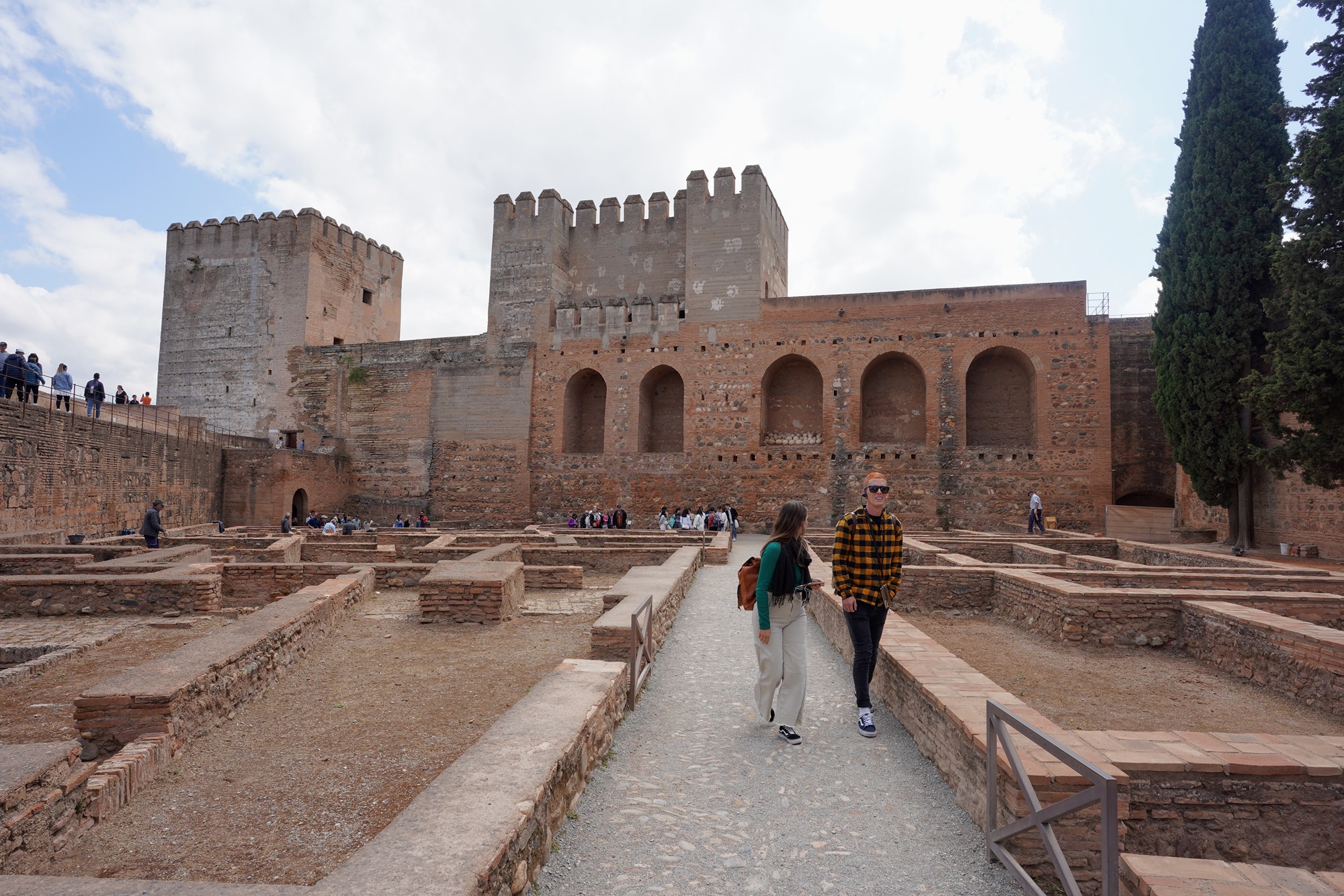




On the other side are the modern buildings

Exiting alcazaba


Lined up to enter Nasrid Palaces, the most famous palace in Alhambra

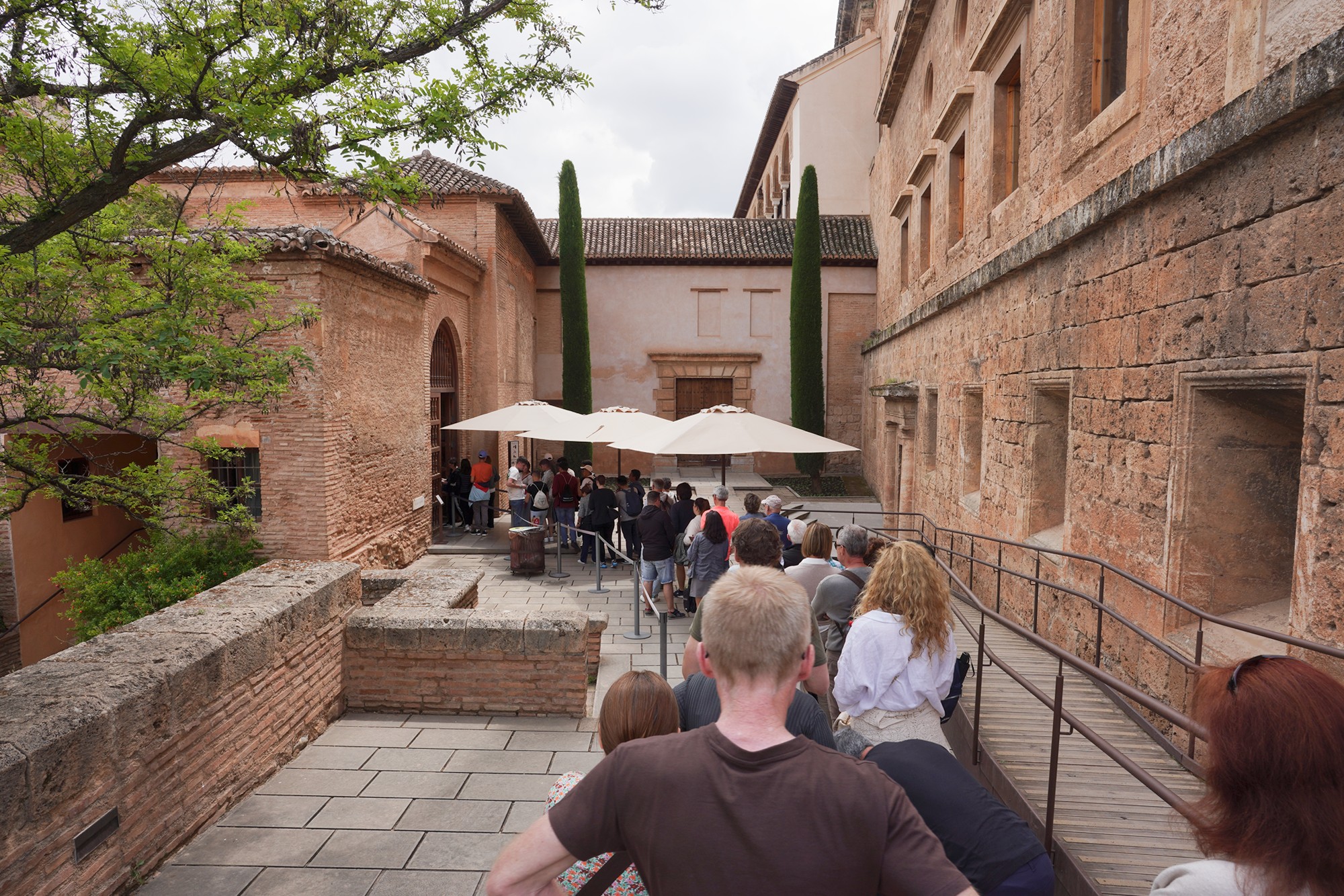












Courtyard of the Myrtles.
The courtyard’s design reflects the concept of paradise and the importance of water in Islamic culture. The pool represents a symbolic element of paradise, providing a refreshing and serene atmosphere. The use of geometric patterns, arches, and columns showcases the intricate and exquisite craftsmanship of the Nasrid period.
The Courtyard of the Myrtles served as a central gathering place and a place of relaxation for the Nasrid rulers. It was a space where they could enjoy the beauty of the surrounding architecture and the tranquility of the courtyard.


A hall in front of the Courtyard of the Mirtle is the Grand Hall of the Ambassadors. The hall served as a grand reception and audience room where the Nasrid rulers would hold important meetings and ceremonies and receive foreign ambassadors. It was a place of political and diplomatic significance.


Walking to the other side

View of the courtyard from the other side

The next area is the Courtyard of the Lions.
The courtyard features a central courtyard surrounded by a gallery supported by 124 white marble columns. These columns, known for their slender and elegant design, create a sense of harmony and beauty. At the center of the courtyard, there is a stunning fountain supported by twelve marble lions, which gives the courtyard its name.
The Courtyard of the Lions is rich in symbolism. The lions represent strength, royalty, and authority, reflecting the might of the Nasrid dynasty. The central fountain and its water symbolize purity, life, and abundance, creating a harmonious and peaceful atmosphere.
The Courtyard of the Lions served as a gathering place for the Nasrid rulers, where they would relax, hold meetings, and enjoy the beauty of the surroundings.




Facing the courtyard is a room called Hall of the Abencerrajes, the sultan’s living room.




Hall of the Kings




Hall of Two Sisters. he hall’s name, “Two Sisters,” is derived from the two large, identical marble flagstones that make up the floor of the hall. According to a legend, if you walk across the floor, it produces a slight sound reminiscent of a person whispering, symbolizing the two sisters engaged in conversation.

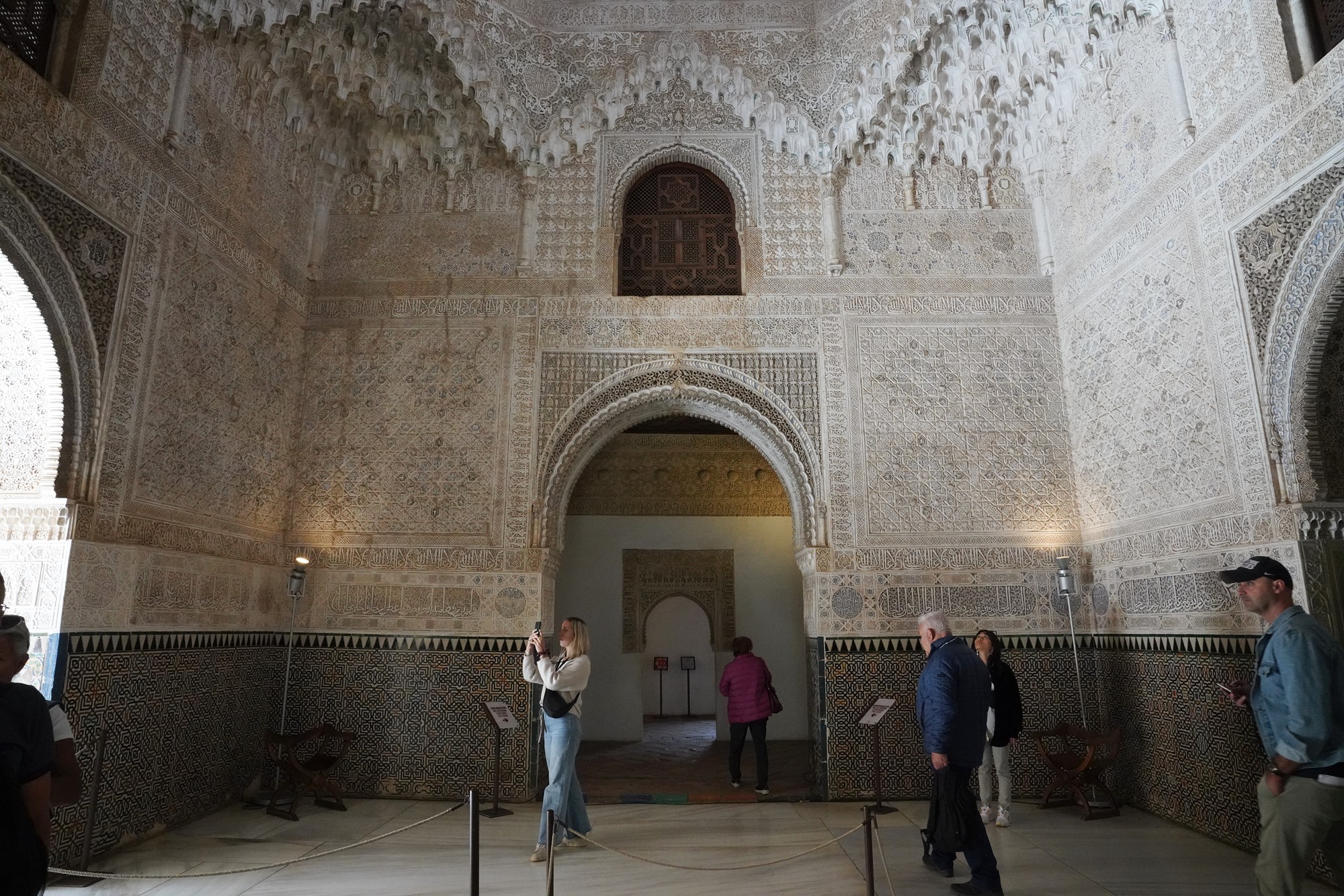




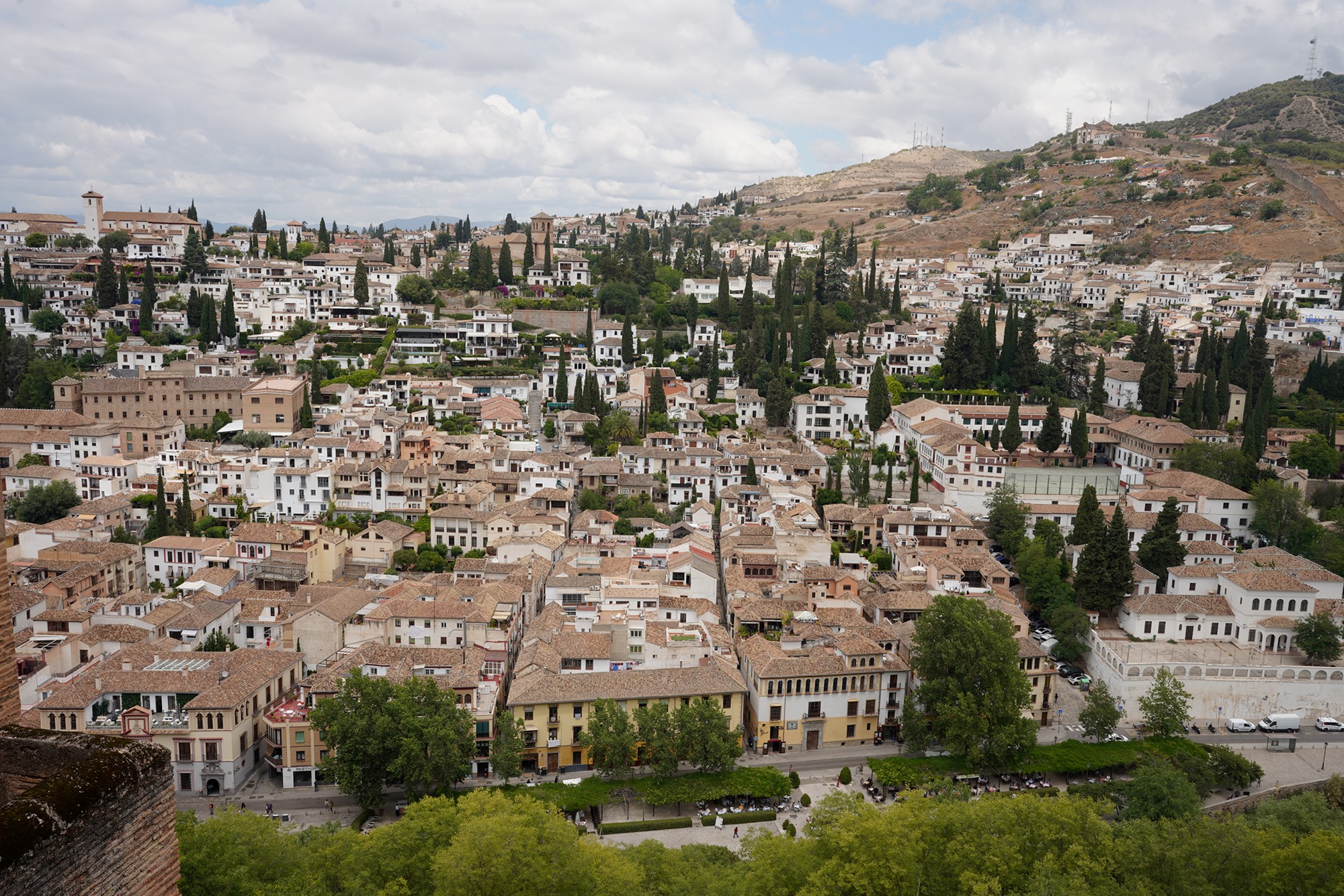


A bath area

Walking out of the palace

The Partal Gardens – The Partal Gardens are built upon the ruins of the Partal Palace.


The remaining of Partal Palace




Looking at the other side and going in that direction

Looking right side


Looking down

Looking at the right side

and the left side

Walking toward the left side, looking at the Partal Garden

Looking back

Far away on the left is Generalife Palace and its garden, which is located outside of the Alhambra wall. Generalife Palace is my next destination.




Exiting the Alhambra

Reaching the other side near Generalife Garden, I walk toward the palace


Looking back at the Alhambra
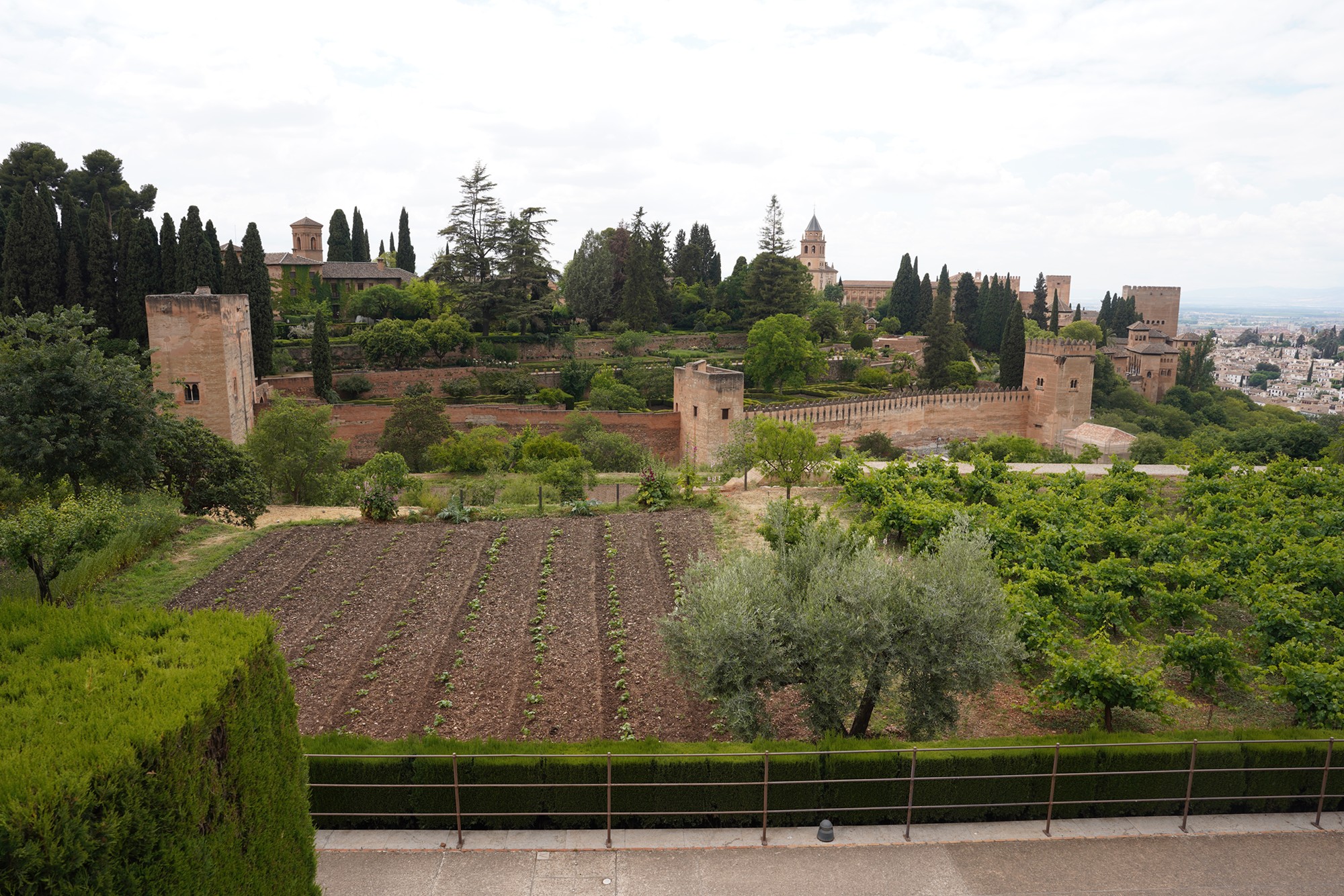
The white building on top of the hill is the Generalife palace

The type of flowers in the garden is what was then 500 years ago. The garden is considered among the finest examples of Islamic garden design

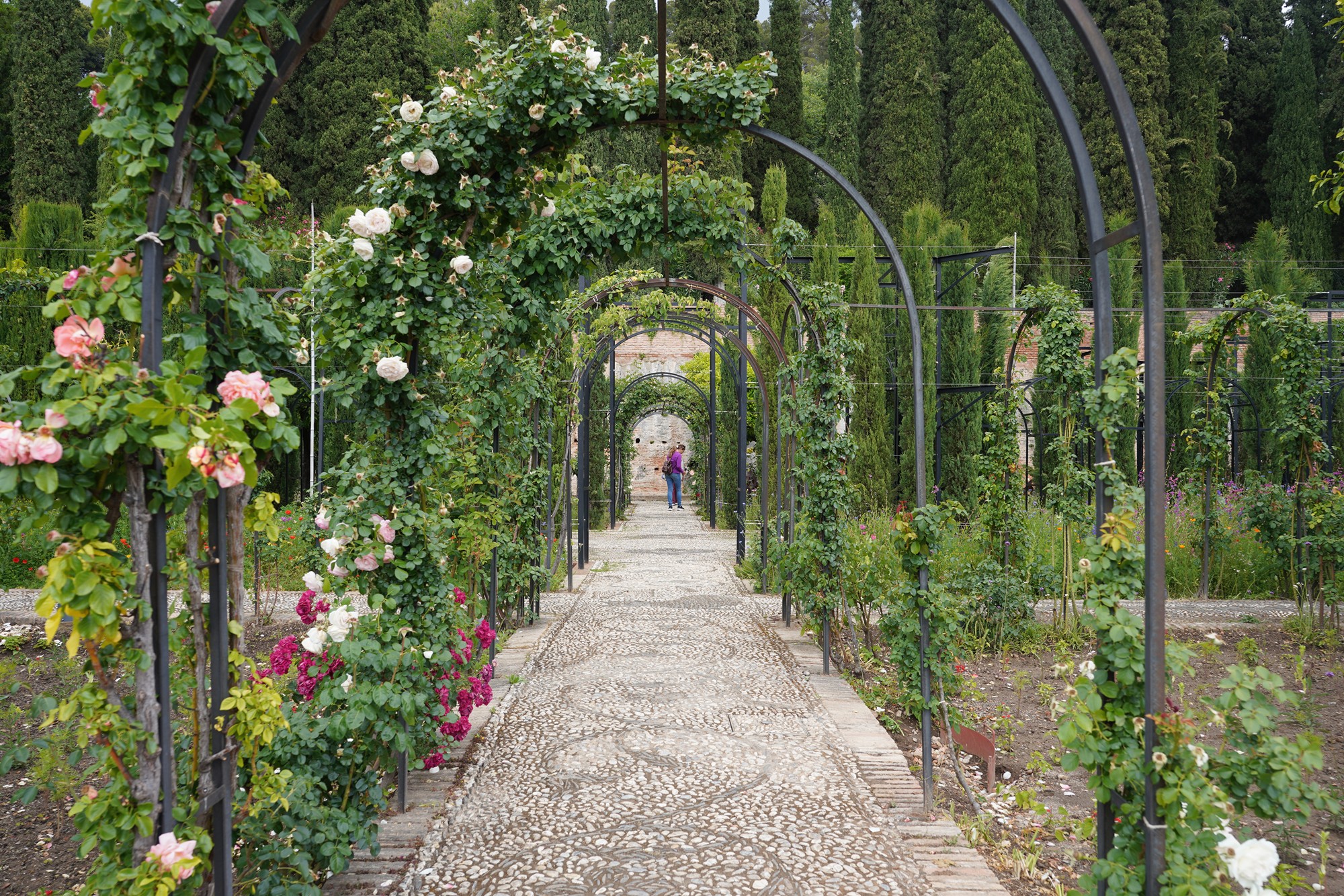



At the bottom of the Generalife Palace. The Generalife was originally built during the 13th century as a leisure retreat for the Muslim rulers of the Nasrid dynasty. It served as a place for relaxation, reflection, and enjoyment of nature away from the official affairs of the Alhambra.


Patio de la Acequia: Another significant area within the Generalife is the Patio de la Acequia, also known as the Court of the Water Channel. It features a long pool of water bordered by myrtle hedges, cypress trees, and flower beds. The symmetrical design, combined with the soothing sound of water, creates a tranquil and refreshing atmosphere.

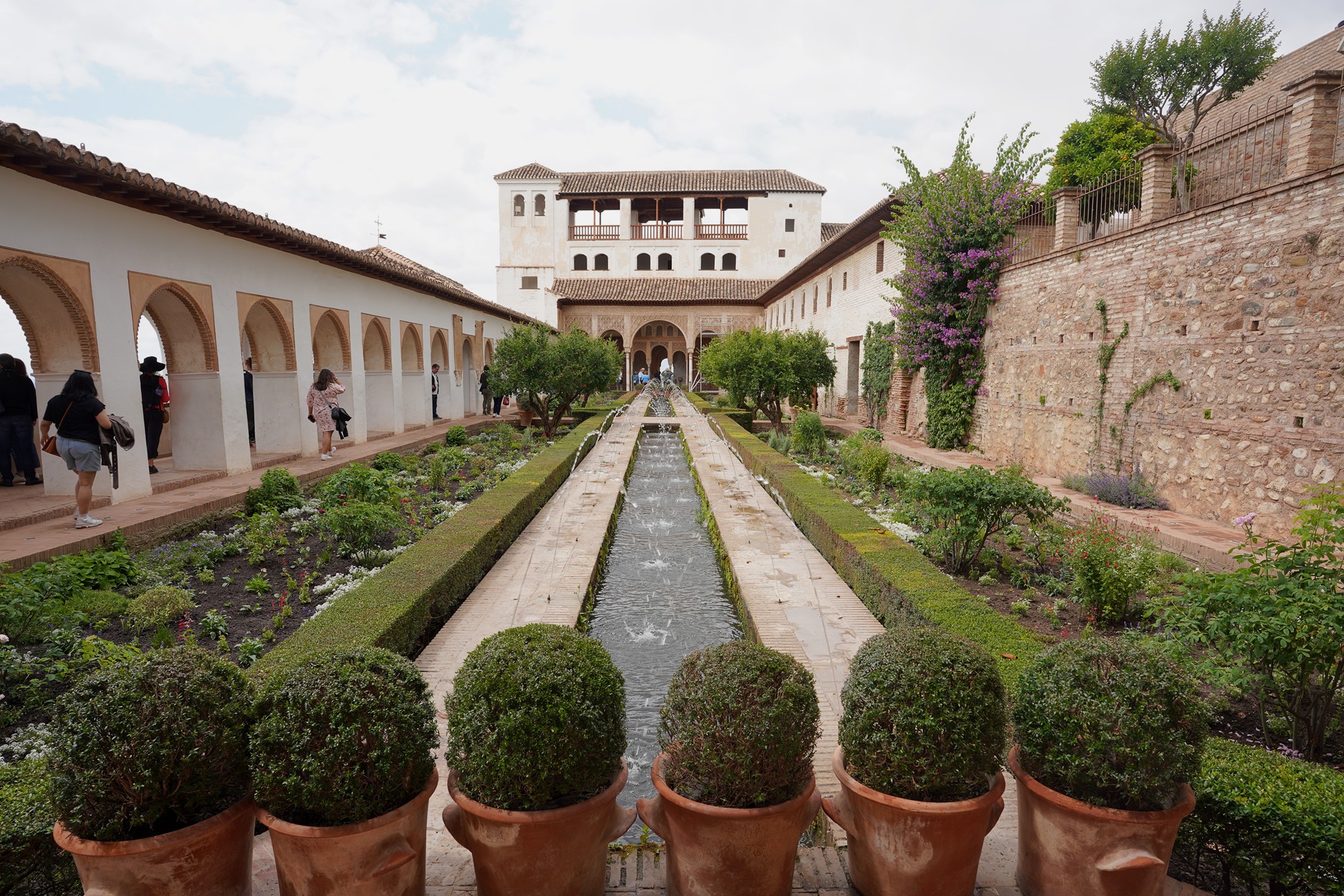
Walking toward the other side by the side way




View from the other side

Walked to the side plaza


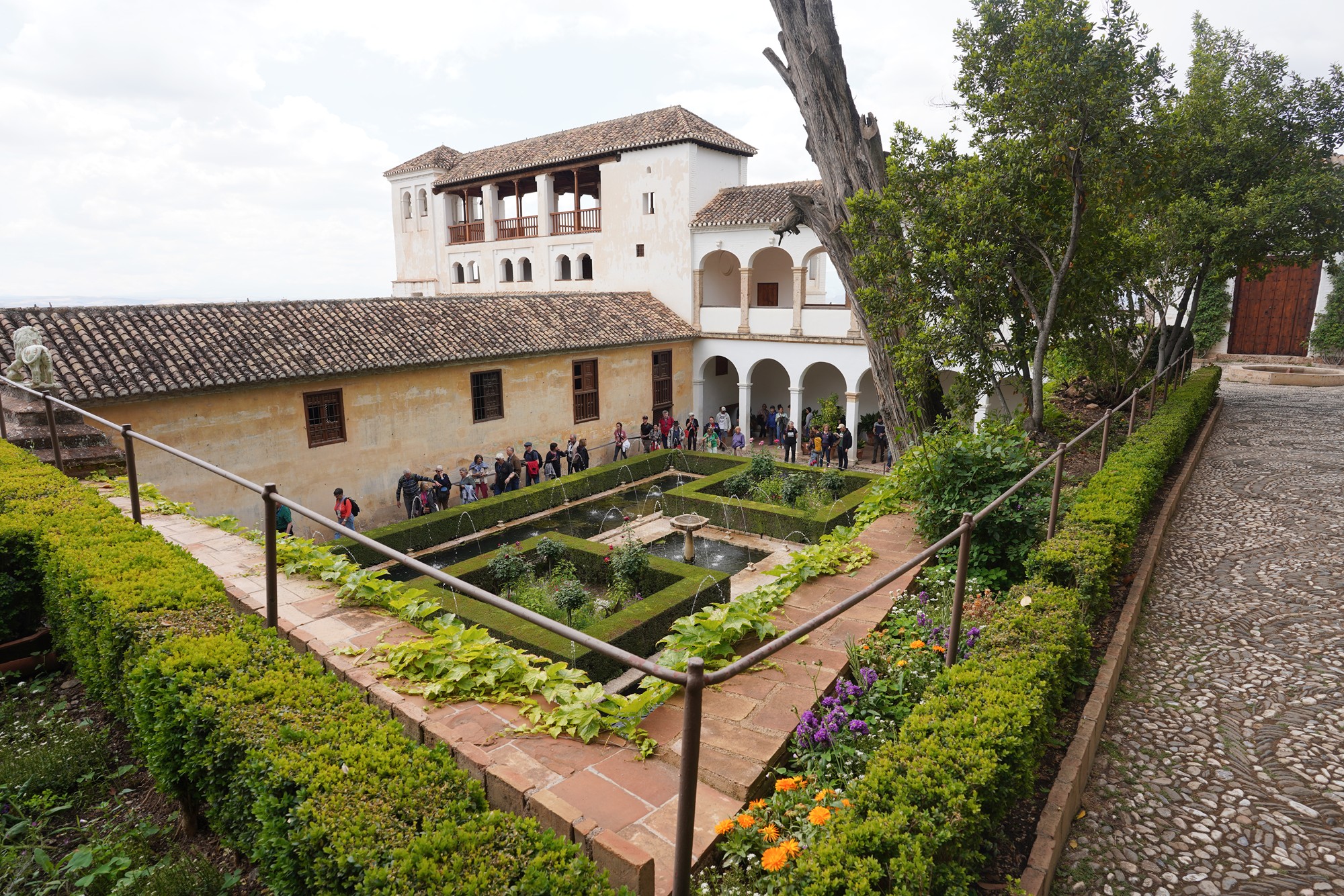


Exiting the Generalife Palace and Gardens




